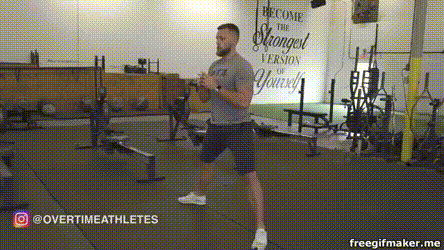Try This – Bodyweight Plyometric Program And Strength Workout For a Higher Vertical Jump
Whether you’re a young athlete, you’re on vacation, you’re de-loading, or you don’t have access to equipment, sometimes you need to train bodyweight… Bodyweight training is something that has been shunned by the athletic community, but for no good reason, as there are many ways to get just as explosive with bodyweight training as you can with dumbbells and barbells.
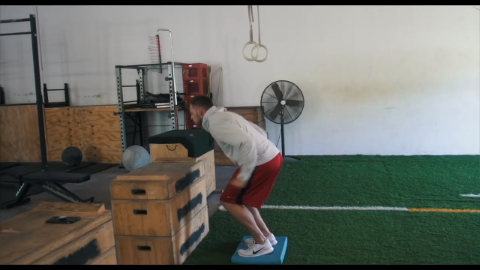
And that’s what I’m going to help you do here, with this bodyweight plyometric program and strength workout.
The Principles of the Plyometric Program
When a car loses efficiency, its gas mileage goes down, horsepower drops, and the overall load it can handle is significantly lowered.
Same thing can happen with an athlete.
A lot of athletes want that spring in their step, but they haven’t developed the energy efficiency to handle that kind of force.
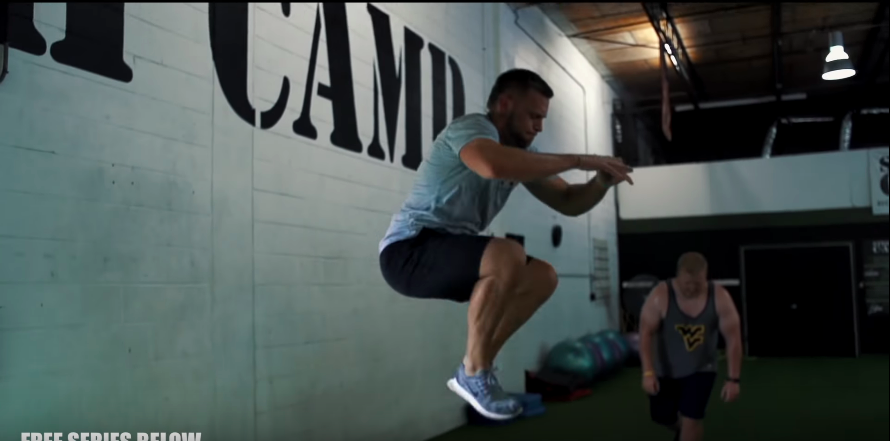
In the plyometric portion of this program, that’s what we’ll work to develop.
Below, you’ll see movements like pogos, squat jumps, and lunge jumps. These continuous, low-level plyometrics build your efficiency, and give you the ability to load up a high amount of force with just a single step and propel you upwards with that high amount of force.
To learn how to develop your own plyometrics program, read this article.
The Principles of the Strength Workout
Most people don’t think you can build strength with bodyweight, however most people don’t know that your body has anatomical mechanisms that you can easily manipulate to trick your body into becoming stronger… And even better, more explosive.
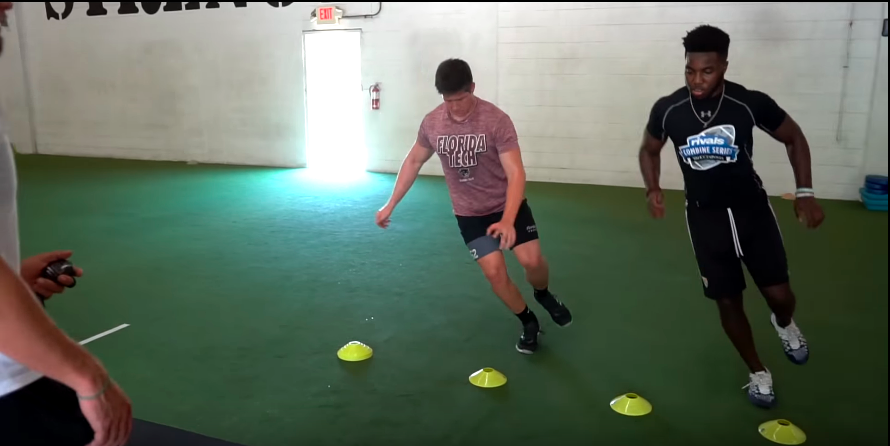
In this workout, we’re going to use isometric holds and eccentric tempos to stimulate the body into recruiting large, fast-twitch muscle fibers, and increasing our ability to absorb force.
To learn how to effectively mix strength training with plyometric training, click here (free video).
Plyometric Program
1. Pogos – 2×10
Pogos are designed to increase energy efficiency in the lower leg and ankle. Although the ankle only plays a small role in the vertical jump, any weak link in the kinetic chain will create energy links. That said we need to be able to produce and absorb force in absence of the knee and hip to get a higher vertical jump.
2. Squat Jumps – 2×10
Next, we need to focus on a continuous, integrated effort from the ankle, hip, and knee. Continuous squat jumps will help us achieve that. In this movement, ensure that you’re getting as much bounce as possible, and be sure to properly absorb force when landing.
3. Lunge Jumps – 2×10
In the last continuous plyometric, we’ll place an emphasis on the knee. Again, the focus should be on getting up as high as possible and to properly absorb force when landing.
4. Box Jumps – 8×1
Box jumps suck… At least that’s what researchers say. But, they don’t have practical experience, and haven’t seen how box jumps inspire athletes to push themselves.
With that said, in this movement, we’re putting all the pieces together, turning up the intensity, and trying to get as much height as we can on the box.
Strength Workout
5. Squat – 3×6 [X/2/X]
An athlete’s ability to recruit large motor units affects his ability to perform explosive movements. This bodyweight squat tempo will manipulate the body to do just that.
When performing this squat, you’ll want to accelerate quickly to the bottom position, perform a hard pause, then explode up.
6. Wide Squat – 3×6 [3/x/x]
Another way to manipulate the body is to train in absence of the stretch-shortening cycle. You can do this with the eccentric tempo I’ve programmed in this wide squat.
Here, you’ll focus on absorbing as much force as possible by slowly lowering yourself to the bottom position. The instant those three seconds are up, you’ll explode back to the top.
7. Bulgarian Split Squat – 3×10 Each
One of my favorite unilateral movements for jumping higher and running faster is the Bulgarian Split Squat. You can change the emphasis to be more on the knee, or more on the hip. You can also perform them in absence of the stretch-shortening cycle.
Here, we’ll just perform normal Bulgarian Split Squats, with an emphasis on exploding from the bottom position as quickly as possible.
8. Nordic Hamstring Curl – 3×3 [5/x/x]
Talk about absorbing force… The Nordic Hamstring Curl might be one of the most effective exercises to develop more efficient force absorption in the hamstring. Not to mention, it can prevent devastating injury.
Here, you’ll need a buddy to hold your ankles as you lower yourself down from the knee (make sure not to bend at the waist) as slowly as possible. Once you hit the floor, push off the ground and perform your next rep.
9. Prone Cobra – 2x60s
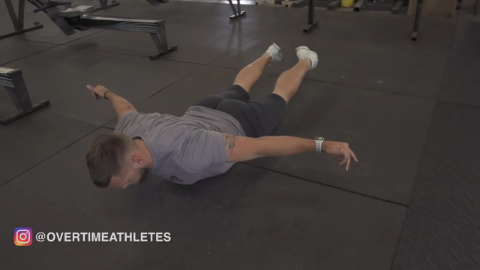
Lots of athletes have poor hip extension, and even worse upper body posture. This movement fixes both of them.
Here, you’ll lay on your stomach with your arms out at a 45 degree angle. You’ll lift your chest off the ground, squeeze your butt, and squeeze your shoulder blades together.
The Principles of the Vertical Jump
To get a crazy vertical jump, one that lets you throw down crazy windmill slams, make ESPN top 10 grabs, and show out at camps and combines…

You need to know how to put everything together.
Yes, a vertical jump program will work, but eventually, your body will need a new stimulus to adapt to.
How do they say it?
Give a man a vertical jump workout, he jumps higher for a day, teach a man how to make a vertical jump workout, he can jump higher for a lifetime.
Go to the link below, and I’ll teach you how for free:
![[Try This] Bodyweight Vertical Jump Workout](https://blog.overtimeathletes.com/wp-content/uploads/2019/04/vertical-bodyweight.png)





